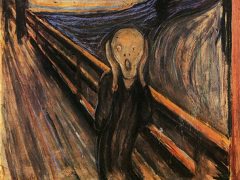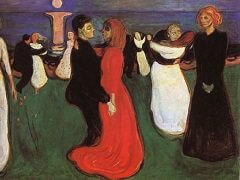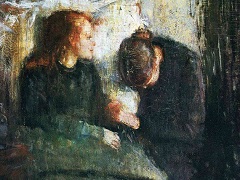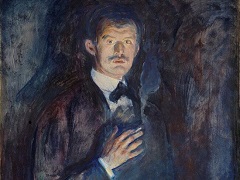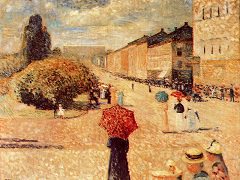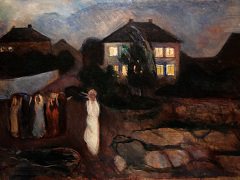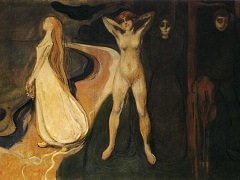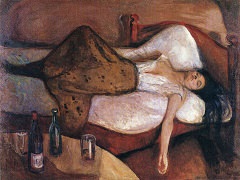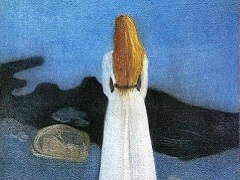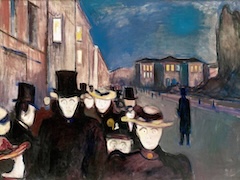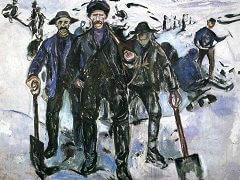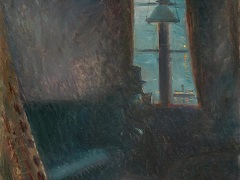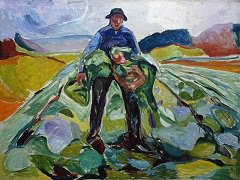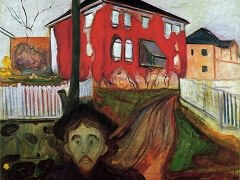Fertility, 1898 by Edvard Munch

Here Munch employs a traditional Adam and Eve composition to create a beautifully balanced symbolic image. All the elements combine to form a static flat pattern simplified with qualified art nouveau linearity and undisturbed by foreshortening. The figures are placed in contemplative profile, with the woman's head gently crowned by a tree branch and the man's hat linked to the curves of the distant hills, and in reverse to the basket held by the woman.
Munch gives a highly personal twist to the idea of fertility. Again, the work was painted at the time when he was exposed to the matrimonial blandishments of Tulla Larsen, and he makes it clear that to marry and be fertile would for him have disastrous consequences. The tree laden with fruit, the basket of cherries, the pregnancy of the woman, the field of vegetables, all point to the benefits of fertility, the continuance of life. But the man sits hunched and forlorn, his hollowed guts transferred, as it were, to the swollen belly of the woman. He looks as though he could hardly walk without the aid of the stick at his side. Confronting him is the stump of a sawn-off branch, for Munch probably signifying impotence in what he valued most, his ability to produce great art. From his standpoint, Fertility meant sterility. The darkened eye of the woman hints that her fate is also sealed, that only death will follow the completion of her generative mission.

